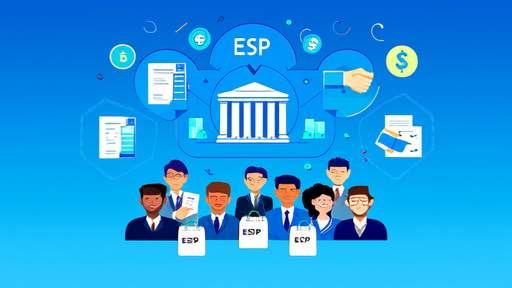The global financial landscape is undergoing a quiet revolution as central banks worldwide explore the potential of Central Bank Digital Currencies (CBDCs). Unlike the speculative frenzy surrounding cryptocurrencies, CBDCs represent a deliberate and government-backed evolution of money itself. These digital versions of national currencies are being designed not just as technological novelties, but as foundational infrastructure for the next era of commerce.
Retail CBDCs are emerging as game-changers for everyday transactions. Imagine walking into a coffee shop where your phone automatically verifies a CBDC payment without requiring an internet connection - this "offline functionality" being tested by several central banks could make digital payments more inclusive than ever before. The European Central Bank's digital euro experiments have demonstrated settlement speeds that make current card payments seem sluggish by comparison, with transactions finalizing in under two seconds.
Cross-border commerce stands to benefit tremendously from CBDC development. The multiple-day waits and hefty fees characteristic of international transfers could become relics of the past. Project mBridge, a collaboration between the Bank for International Settlements and several Asian central banks, has already demonstrated near-instantaneous cross-border settlements between commercial banks using CBDCs. This isn't merely about speed - the transparency inherent in CBDC transactions could dramatically reduce the compliance costs that currently burden international trade.
Supply chain finance represents another frontier for CBDC innovation. Smart contract functionality being explored by China's digital yuan program could enable automatic payments when shipment milestones are reached, solving longstanding trust issues between suppliers and buyers. This "programmable money" aspect allows for sophisticated conditional transactions that traditional banking systems struggle to execute efficiently. The Bank of England has noted in its research how CBDCs could provide an auditable trail from raw material purchase to final sale, potentially revolutionizing inventory financing.
Small and medium enterprises (SMEs), often underserved by traditional financial institutions, may find CBDCs particularly transformative. The ability to receive payments directly in central bank money eliminates credit risk while reducing processing fees that erode thin margins. Brazil's Drex digital currency pilot has shown how CBDCs can be integrated with existing business software, allowing even small retailers to automate accounting and tax compliance through seamless data sharing between payment systems and financial records.
The wholesale applications of CBDCs could quietly reshape corporate treasury operations. Large institutions moving millions between accounts currently rely on complex networks of nostro accounts and messaging systems. CBDCs enable these transfers to occur on unified ledgers with atomic settlement - where payment and delivery occur simultaneously. The Monetary Authority of Singapore's Ubin project demonstrated how this could reduce counterparty risk in securities trading while freeing up capital currently tied in collateral arrangements.
Perhaps most intriguing are the new business models CBDCs might enable. Micropayments become economically viable when transaction costs approach zero, opening possibilities like pay-per-second media consumption or usage-based insurance premiums. The Bahamas' Sand Dollar, the world's first live retail CBDC, has already been used to facilitate innovative lending models where repayment occurs automatically from future CBDC income flows. Such programmable features could give rise to financial products that are impossible with today's monetary infrastructure.
However, the commercial adoption of CBDCs faces significant challenges. Businesses will need compelling reasons to transition from established payment rails. The Swedish e-krona tests revealed user hesitation around privacy concerns despite the Riksbank's assurances. Similarly, merchants in Nigeria initially resisted the eNaira due to unfamiliarity, demonstrating that technological superiority alone doesn't guarantee adoption. Central banks must carefully balance innovation with continuity to avoid disrupting existing economic ecosystems.
The coming decade will likely see CBDCs evolve from experimental projects to essential commercial infrastructure. As bank of Canada deputy governor Timothy Lane observed, CBDCs aren't about chasing innovation for its own sake, but about ensuring public money remains relevant in an increasingly digital economy. The businesses that understand how to leverage CBDCs' unique capabilities - from programmable conditions to seamless integration - may gain first-mover advantages in efficiency, transparency, and customer experience that could redefine competition in their industries.

By /Jun 3, 2025

By /Jun 3, 2025

By /Jun 3, 2025

By /Jun 3, 2025

By /Jun 3, 2025

By /Jun 3, 2025

By /Jun 3, 2025

By /Jun 3, 2025

By /Jun 3, 2025

By /Jun 3, 2025

By /Jun 3, 2025

By /Jun 3, 2025

By /Jun 3, 2025

By /Jun 3, 2025

By /Jun 3, 2025

By /Jun 3, 2025

By /Jun 3, 2025

By /Jun 3, 2025

By /Jun 3, 2025

By /Jun 3, 2025